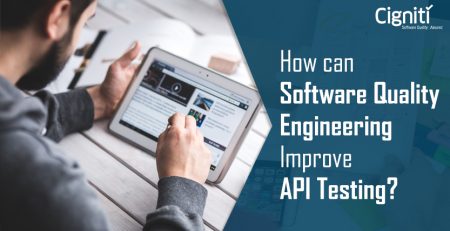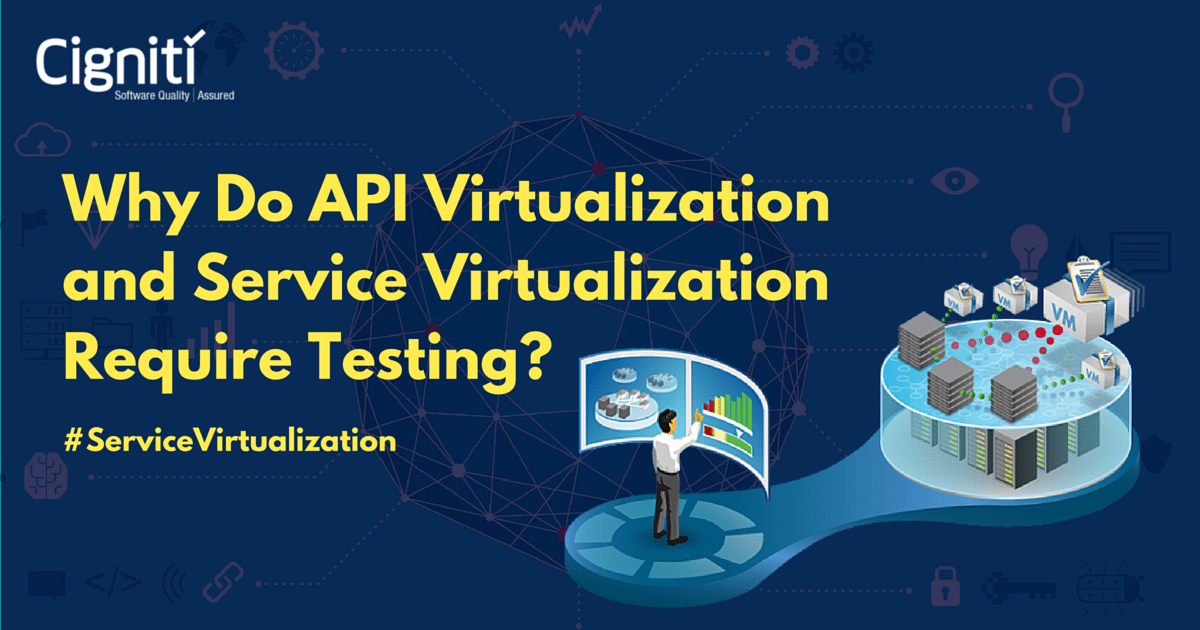The 5 biggest API testing challenges & ways to overcome them
|
Listen on the go!
|
Why have the big box retailers flourished, causing the decline of smaller retailers?
They offered a one-stop-solution for the average consumer, and in doing so, eliminated the need to travel to different stores, to ultimately save money and time.
An Application Programming Interface (API) dictates protocols, rules, routines, logic, and tools for establishing communication between different systems and applications. An API forms the middle layer of a three-layered application pyramid, consisting of a data layer, a server layer, and a presentation layer. While the data layer is concerned with data storage and the presentation layers are concerned with the user interface, the server layer is composed of business logic that defines the way for users to interact with various functions, features, and information.
APIs are the one-stop-shop of software development
Data is the most valuable asset in today’s technology-driven world, driven in part by the surge in connected devices, raising exponentially the volume of information being produced every day. Data is critical for businesses to scale and make informed, customer-centric decisions. APIs are used as a way to expose business services to customers and partners.
McKinsey aptly highlights the value of API for businesses –
“As the connective tissue linking ecosystems of technologies and organizations, APIs allow businesses to monetize data, forge profitable partnerships, and open new pathways for innovation and growth.”
APIs enable multiple inter-application communication channels and facilitate holistic service delivery. This enhances customer satisfaction and time-to-market, providing businesses with a competitive edge. Adopting APIs as a channel for service delivery forces enterprises to streamline organizational processes. The payoff is new revenue streams due to the widening of the customer reach. APIs also aid collaboration in the enterprise application ecosystem, where businesses can engage in a mutually-advantageous relationship while increasing their own productivity and efficiency.
How API testing helps businesses excel
While APIs hold the key to digital transformation, they also provide the window for potential security breaches. API testing, thus, needs to do more than just validate the optimal implementation of APIs. It also must assess them for security risks and threats. With a comprehensive API testing strategy, businesses can empower themselves by offering a secure and reliable platform to their customers and partners.
Top 5 challenges of API testing
Building a meaningful and sustainable API testing practice within an organization can bolster test coverage and ensure reduced risk across public and internal interfaces. Testing APIs means going beyond the surface of the GUI layer to dissect the application to its core, which is hugely beneficial. However, there are many challenges that organizations face to successfully adopt a productive API testing process.
1. Tracking API Inventory: The numerous APIs involved in an application act independent of each other. While performing API testing, it gets challenging for testers to keep up with rapid updates and how those updates impact the overall application. Maintaining the API inventory is an important activity – without it, tests fail or miss evaluating recent changes to the application and APIs.
2. Knowledge of the business application logic: APIs usually have a number of rules and guidelines dictating their usage such as copyright policies, storage policies, rate limits, and display policies. Based on the overall business logic, a set of business rules are defined on which APIs are developed, used, and integrated. The lack of knowledge and understanding of these business logic and rules among API testers lead to ambiguity regarding the test objective.
3. Complex protocols: APIs interact with each other through a set of defined rules known as contracts or protocols. Often these protocols are complicated and might prove a hindrance to the proper integration and testing of the communication between components.
4. Impact of change: Whenever there is a new version of an API, it will likely cause the entire application to go haywire. As there are multiple dependent components, implementing a change is often highly risky and unpredictable in terms of its effects.
5. Test data management: The numerous APIs with their various parameters require an enormous amount of data to test them effectively. Maintaining such a large amount of data and ensuring that the data is reusable is a big challenge for API testers. The diversity between the APIs and the limited access to the source platform further makes test data management challenging.
As organizations seek to incorporate API testing into their test automation, they are running into these challenges as they try to build a workflow that is sustainable and maintainable.
A joint solution to the problems
Cigniti and Parasoft have joined forces to help organizations improve their API testing strategies. By leveraging Cigniti’s deep knowledge of software testing practices and Parasoft’s advanced API testing technologies, teams can effectively tackle the common challenges of API testing discussed above and maximize their ROI from this essential testing practice.
Cigniti takes a tool and technology agnostic approach towards API automation. With Parasoft’s Smart Test Generator for API, Cigniti leverages the optimized test coverage model to generate API tests faster. Since the Smart Test Generator is a browser plug-in for SOAtest and needs functional testing in order to get the AI to generate test cases, the expert testers at Cigniti optimize test scenarios to go through SOAtest’s AI to generate test cases with maximum coverage.
Parasoft SOAtest is designed to scale and address the complexities of modern testing, with the broadest support for standard and nonstandard message formats and protocols in the industry. It also includes AI-powered API discovery and test creation tools that are huge time savers, helping testers by automatically building meaningful API test scenarios from traffic recordings.
Cigniti’s software testing expertise spans across multiple industries. For example, in the financial domain, they exercise virtualization by creating their own web services to gain mock data for forms such as payment gateways and credit scores. With a strong domain expertise, Cigniti’s API testing and automation proficiency allows them to extract information even from restricted, geo-based location applications.
Being data-driven, the framework uses four to five authentication methods while performing API tests. Each authentication method has its own parameters and protocols. The response obtained against each of the parameters and protocols are recorded as test data and saved as XML files. The framework can connect with various types of data files such as XML, EXE, CSV, and database. The test data available in these files acts as payload for APIs. This comes handy when running performance tests on web services and APIs.
To tackle test data management, Parasoft SOAtest captures and stores data into a model that allows users to understand the connections between API call requests and responses. From this, users can then mask, generate, and subset new data that fits their exact API testing needs.
In addition to tackling test creation and test data, Parasoft SOAtest provides an intuitive change management workflow that automatically alerts users of changes in an API, including identifying which particular service definitions have changed along with which tests will be affected by this change. Finally, to gain visibility, the Parasoft ecosystem gives testers a place to visualize their test environment and all of its components and connections. These test environments can be quickly configured and manipulated to represent different connections between front-end and back-end systems, giving testers greater control, and helping testers, developers, and DevOps engineers attain greater collaboration.
Cigniti’s inhouse grown automation framework comprises Java+Rest assured libraries and C#+Nunit framework that ensure optimal test coverage. The Groovy script–based framework implemented within the framework enables them to develop customized test scripts. With an internal reporting feature, Cigniti’s automation framework analyzes and understands the response obtained from different APIs, validates the response against the requirements, and generates a customized HTML report for all the API tests. Cigniti’s QA teams perform API tests to verify and validate the functionality and behavior of interfaces through automated request generations and verify the corresponding published responses. Being experts in Service Virtualization testing services, Cigniti helps perform load testing and performance testing of applications via multiple simulated connections, thereby enabling faster integration and release.
Cigniti and Parasoft together support enterprises sail smoothly through their API testing cycle.





Leave a Reply